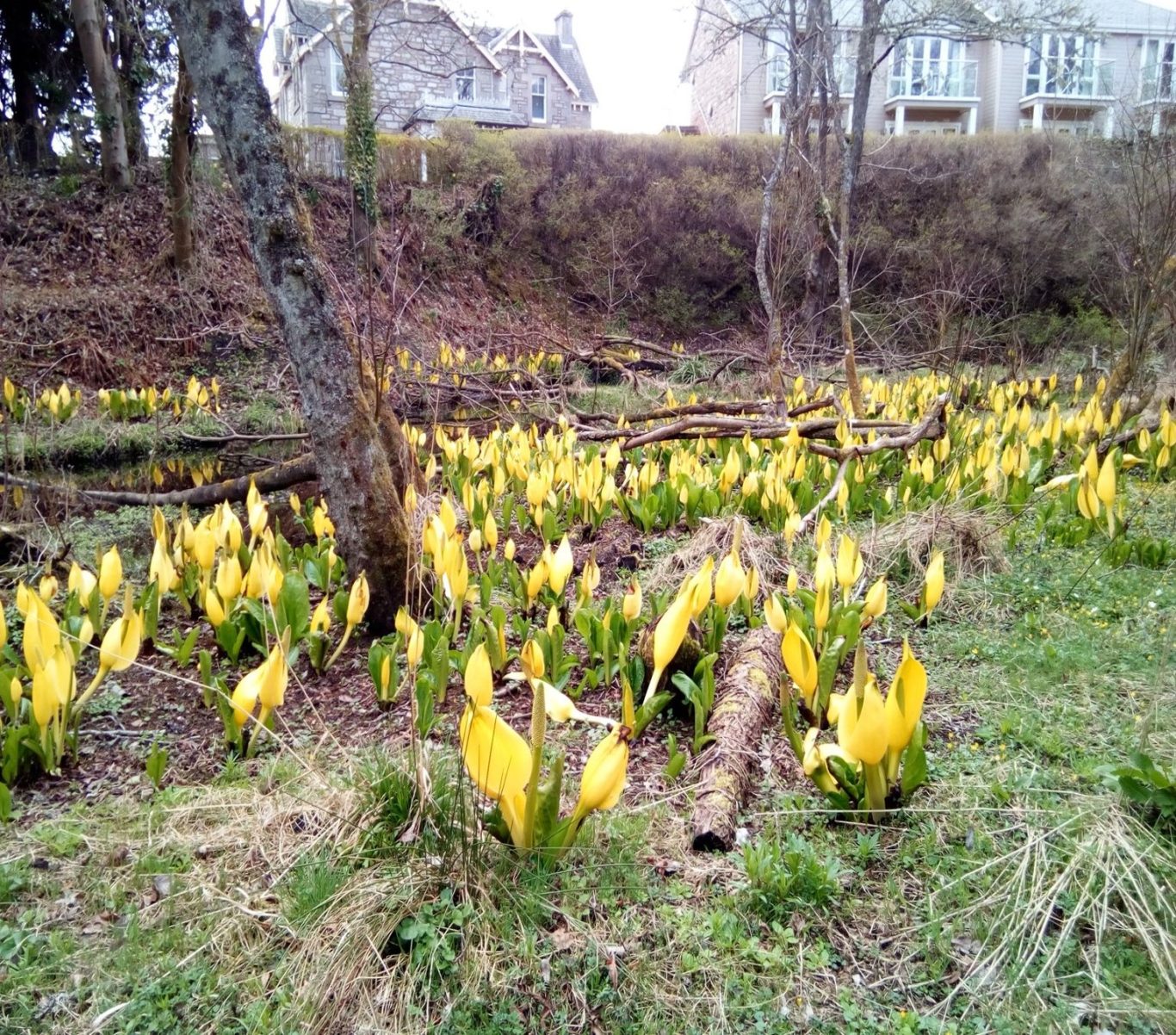American skunk cabbage - Lysichiton americanus
Key Findings
Range and Distribution:
The American skunk cabbage plant (fig. 1) is native to Western North America (Rotteveel, 2009). It was an important resource for Native Americans who utilised its large and waxy leaves as dressings for wounds, while the whole plant could be consumed when other food was scarce (NBN Atlas, 2024). In 1901, American skunk cabbage was first introduced to the UK as an ornamental plant. By 1947 it had gradually 'escaped' from gardens and was identified in the wild for the first time (GBNNSS, 2016). Fig. 2 demonstrates the distribution of American skunk cabbage records across Scotland. The species appears most common around the central belt, while in the East Grampian area it appears most prevalent around the River Don.
Habitat and Physical Characteristics:
American skunk-cabbage prefers wetter environments and is therefore found near to streams, bogs, and ponds (SISI, n.d.). It can be identified by its striking yellow flowers, leathery texture, and unpleasant skunk-like smell (Brown et al, n.d.). Its seeds may be transported via rivers, allowing the species to further colonise riverbanks. Aside from requiring water, the species can thrive in a wide variety of conditions, from bright light to shade and acid to alkaline soils (Brown et al, n.d.; SISI, n.d.).
Impacts on Native Biodiversity:
Being so adaptable, the species is a risk to wetland environments and ecosystems, both terrestrial and coastal. Their large thick leaves will block the sun to other species, outcompeting them for resources, which can result in species displacement and local extinctions. Mosses and vascular plants are most impacted by American skunk-cabbage invasion (Rotteveel, 2009).
Management:
Until 2016, the species was commercially available to buy in the UK. However, EU invasive species regulation now determines that the intentional keeping of American skunk cabbage is illegal (European Commission, 2022). Post Brexit, the UK maintains the use of this European law. Removal of existing populations is often achieved using herbicides, however using chemicals near to bodies of water can pose environmental risks. The plant may also be pulled up from the root, although as they grow with large root systems, it can be difficult to effectively remove the whole plant. (SISI, n.d.).

fig. 1: (SISI, n.d.) - American Skunk Cabbage

fig. 2: (NBN Atlas, 2024) - Records of American Skunk Cabbage (1905 -2024)
Notes
Linked Information Sheets
Key sources of Information
Brown et al (n.d.) American Skunk Cabbage
European Commission (2022) Commission Implementing Regulation (EU) 2016/1141
GBNNSS (2016) American Skunk-cabbage Lysichiton americanus
NBN Atlas (2024) American Skunk-cabbage Lysichiton americanus
Rotteveel, T. (2009) Lysichiton americanus (American skunk cabbage)
Reviewed on/by
09/06/2024 by Cathryn Lovie
19/08/2024 by Ian Hay
13/01/2024 by Charlotte Tomlinson (updated)
22/01/2024 by Mariia Topol
Status
First Draft
To report errors, highlight new data, or discuss alternative interpretations, please complete the form below and we will aim to respond to you within 28 days
Contact us
Telephone: 07971149117
E-mail: ian.hay@stateofthecoast.scot
We need your consent to load the translations
We use a third-party service to translate the website content that may collect data about your activity. Please review the details in the privacy policy and accept the service to view the translations.

